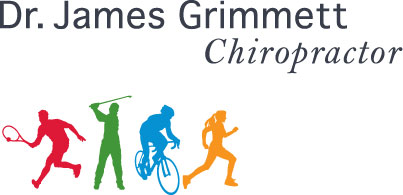Dr. Paul Hodges, a leader in spinal research, reports 75% of low back pain(BP) patients have gastrointestinal (GI) problems such as heartburn and constipation. On a a clinical note, respiratory problems and pelvic floor problems such as incontinence were also strongly linked with BP patients.
This connection of organ irritation and its association to pain elsewhere in the body is not new information. A Google search will keep you busy on this topic. Classic examples of this link include gallbladder inflammation and right shoulder pain, kidney stones and low back pain, uterine cramping and low back pain… I should also mention stomach (i.e. heartburn) and/or small intestine irritation and their referral of pain to the shoulder or mid back. I mention these last two as they are more common than many would think.
The explanation of the pain referral can be connected clearly to the body’s anatomy. Without going into pages detailing this I will simply say there is a strong nerve and fascial connection between organs and other body parts such as back and shoulder. This is common knowledge should you be in this field of physical medicine.
Before continuing on I should say there are many shoulder and back problems that do not involve organs. Certainly a fall off your bike or a ski injury can result in a torn tendon or pulled muscle that can explain the local pain.
Organ involvement
Given the organ involvement is more common than not in BP I would want to include this in my list of probable causes. That is, until ruled in or ruled out in the examination. If you take research such as Hodges where 75% of BP patients have GI problems it seems obvious that a GI evaluation should be included in the work up in this group of patients.
It seems to be the case, especially in long standing BP patients, that several problems co-exist. A chronic BP patient could easily have, and I might add, commonly do have all of the following: low back muscle strain, herniated disc, osteoarthritis, constipation, heartburn, and breathing problems.
In these cases of multiple problems it certainly helps in creating a treatment plan if the primary cause can be determined? Even if there is one likely cause, usually several if not all of the co-existing problems need to be addressed for the treatment plan to be most effective.
Let’s take the example of an old abdominal scar (i.e. appendectomy) resulting in shoulder pain from the fascial connection. Treatment would certainly include soft tissue therapy to the old scar. This alone may not be enough. A poor response to the treatment would help to determine this.
When a problem is long standing such as an old surgical scar it is likely that posture is negatively influenced. The patient’s post surgical guarding posture of slouching with head and shoulders rounded forward may have continued. Overtime this can compromise the shoulder (and other areas) to the point of a muscle/tendon problem (i.e. rotator cuff tendinitis). In this case treatment is likely to be more effective if shoulder treatment and postural corrective exercises are included with the soft tissue therapy of the surgical scar.
Fortunately the patient’s response to treatment quickly helps determine if the treatment is correct. If response to treatment is not favourable in 1-2 sessions at minimum the working diagnosis should be questioned. This holds true for many muscle and joint problems seen in physiotherapy, chiropractic, and massage therapy clinics.
